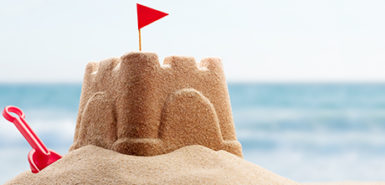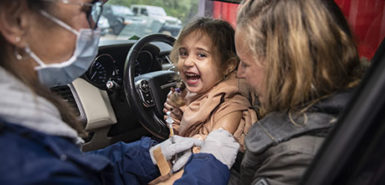
Campfires and grills power some of summer’s sweetest memories.
S’mores. Ghost stories. Sizzling burgers and steaks.
While cookouts can be done safely with kids of all ages, these events can also be a source of severe injuries.
As families shift into vacation mode, it’s easy to take your eyes off the kids, said Erica Michiels, MD, who specializes in pediatric emergency medicine at Spectrum Health.
Bad burns happen in a flash.
When grilling, take all the same safety precautions as you would when cooking with a stove, Dr. Michiels said.
“Teach kids that the grill is hot and to stay away from it,” she said. “And don’t let older kids operate a grill unless you are there to supervise.”
The most common type of grilling injury? Burned fingertips.
Campfires are more problematic, she said.
“Often, adults like to drink around campfires, so supervision is not ideal,” she said.
Campfire hazards to watch for:
Tripping
“Kids can get too close to a fire, lose their footing and fall in,” Dr. Michiels said. And while that can happen to adults, too, the injuries are far more devastating for children.
“The body does not tolerate large burns,” she said. “So a burn that is the same size on an adult and toddler is much more dangerous for the child because it’s a larger percentage of the skin’s surface area.”
Children—particularly those ages 4 and younger—have thinner skin, which puts them at higher risk for fatal burns.
Accelerants
If someone intends to use an accelerant such as lighter fluid on the fire, make sure it’s a responsible adult doing it. Children should stand well back from the fire.
Poison ivy
Often, people carelessly throw brush into a fire. The problem is, you don’t always know what plants are in there.
“Oils in poison ivy vaporize into smoke and cause some of the worst cases, including inside the lungs and mouth,” Dr. Michiels said.
Drinking and drugs
Beach bonfires have been a rite of teenage passage for generations. Unfortunately, they’re also a common place for teens to drink and use drugs, leading to dangerous behaviors. This can lead to falls, burns, cuts from tossed bottles.
If you haven’t talked with your kids to explicitly tell them why you don’t want them to experiment with drugs or alcohol, it’s time for a pre-fire chat.
In fact, if you don’t talk to your teens about it, experts say you may be sending the message that you don’t think it’s a big deal. Keep the conversation low-key, said the experts at the Substance Abuse and Mental Health Services Administration.
Plan on having many short talks and let your kids know they can text you at any time for a ride if they feel unsafe.
Morning-after burns
“Every year, we’ll see a few cases where kids ran across the extinguished campfire the next morning, not realizing it’s still hot,” Dr. Michiels said. “It’s an injury that flies under the radar but is more common than people realize.”
Parents and adults should brush up on first-aid guidelines for burns.
The American Academy of Pediatrics urges an immediate visit to a pediatrician or the emergency room for any blistering, swollen burn that covers an area larger than the size of your child’s hand. A burn on the hand, foot, face, genitals or a joint is considered a severe injury that needs examined by a professional.
Run cool water for five minutes on minor burns, including a first-degree burn where the skin turns red but does not blister, and on minor second-degree burns, which are very painful and likely to blister. Then bandage the wound in a way that it won’t stick to the burn site.
Don’t apply any ointment unless instructed by a care provider. Don’t use home remedies such as butter or grease, because these can cause serious infections.
 /a>
/a>
 /a>
/a>
 /a>
/a>
We built a safer campfire place. Using decorative blocks and lining with fire retardant brick and a fire ring, it does not get hot on outside. And it’s built high enough so the little ones can’t accidentally fall in/ trip and fall in. No after burns from a smoldering fire/ ashes either. Just need to get a lid made for it so embers don’t travel!